Yan Qin
Fellow IEEE
AdaptiveFusion: Adaptive Multi-Modal Multi-View Fusion for 3D Human Body Reconstruction
Sep 07, 2024



Abstract:Recent advancements in sensor technology and deep learning have led to significant progress in 3D human body reconstruction. However, most existing approaches rely on data from a specific sensor, which can be unreliable due to the inherent limitations of individual sensing modalities. On the other hand, existing multi-modal fusion methods generally require customized designs based on the specific sensor combinations or setups, which limits the flexibility and generality of these methods. Furthermore, conventional point-image projection-based and Transformer-based fusion networks are susceptible to the influence of noisy modalities and sensor poses. To address these limitations and achieve robust 3D human body reconstruction in various conditions, we propose AdaptiveFusion, a generic adaptive multi-modal multi-view fusion framework that can effectively incorporate arbitrary combinations of uncalibrated sensor inputs. By treating different modalities from various viewpoints as equal tokens, and our handcrafted modality sampling module by leveraging the inherent flexibility of Transformer models, AdaptiveFusion is able to cope with arbitrary numbers of inputs and accommodate noisy modalities with only a single training network. Extensive experiments on large-scale human datasets demonstrate the effectiveness of AdaptiveFusion in achieving high-quality 3D human body reconstruction in various environments. In addition, our method achieves superior accuracy compared to state-of-the-art fusion methods.
Graph neural network-based lithium-ion battery state of health estimation using partial discharging curve
Aug 30, 2024Abstract:Data-driven methods have gained extensive attention in estimating the state of health (SOH) of lithium-ion batteries. Accurate SOH estimation requires degradation-relevant features and alignment of statistical distributions between training and testing datasets. However, current research often overlooks these needs and relies on arbitrary voltage segment selection. To address these challenges, this paper introduces an innovative approach leveraging spatio-temporal degradation dynamics via graph convolutional networks (GCNs). Our method systematically selects discharge voltage segments using the Matrix Profile anomaly detection algorithm, eliminating the need for manual selection and preventing information loss. These selected segments form a fundamental structure integrated into the GCN-based SOH estimation model, capturing inter-cycle dynamics and mitigating statistical distribution incongruities between offline training and online testing data. Validation with a widely accepted open-source dataset demonstrates that our method achieves precise SOH estimation, with a root mean squared error of less than 1%.
A Change Point Detection Integrated Remaining Useful Life Estimation Model under Variable Operating Conditions
Jan 09, 2024Abstract:By informing the onset of the degradation process, health status evaluation serves as a significant preliminary step for reliable remaining useful life (RUL) estimation of complex equipment. This paper proposes a novel temporal dynamics learning-based model for detecting change points of individual devices, even under variable operating conditions, and utilises the learnt change points to improve the RUL estimation accuracy. During offline model development, the multivariate sensor data are decomposed to learn fused temporal correlation features that are generalisable and representative of normal operation dynamics across multiple operating conditions. Monitoring statistics and control limit thresholds for normal behaviour are dynamically constructed from these learnt temporal features for the unsupervised detection of device-level change points. The detected change points then inform the degradation data labelling for training a long short-term memory (LSTM)-based RUL estimation model. During online monitoring, the temporal correlation dynamics of a query device is monitored for breach of the control limit derived in offline training. If a change point is detected, the device's RUL is estimated with the well-trained offline model for early preventive action. Using C-MAPSS turbofan engines as the case study, the proposed method improved the accuracy by 5.6\% and 7.5\% for two scenarios with six operating conditions, when compared to existing LSTM-based RUL estimation models that do not consider heterogeneous change points.
LightGCNet: A Lightweight Geometric Constructive Neural Network for Data-Driven Soft sensors
Dec 19, 2023Abstract:Data-driven soft sensors provide a potentially cost-effective and more accurate modeling approach to measure difficult-to-measure indices in industrial processes compared to mechanistic approaches. Artificial intelligence (AI) techniques, such as deep learning, have become a popular soft sensors modeling approach in the area of machine learning and big data. However, soft sensors models based deep learning potentially lead to complex model structures and excessive training time. In addition, industrial processes often rely on distributed control systems (DCS) characterized by resource constraints. Herein, guided by spatial geometric, a lightweight geometric constructive neural network, namely LightGCNet, is proposed, which utilizes compact angle constraint to assign the hidden parameters from dynamic intervals. At the same time, a node pool strategy and spatial geometric relationships are used to visualize and optimize the process of assigning hidden parameters, enhancing interpretability. In addition, the universal approximation property of LightGCNet is proved by spatial geometric analysis. Two versions algorithmic implementations of LightGCNet are presented in this article. Simulation results concerning both benchmark datasets and the ore grinding process indicate remarkable merits of LightGCNet in terms of small network size, fast learning speed, and sound generalization.
A Federated Learning-based Industrial Health Prognostics for Heterogeneous Edge Devices using Matched Feature Extraction
May 18, 2023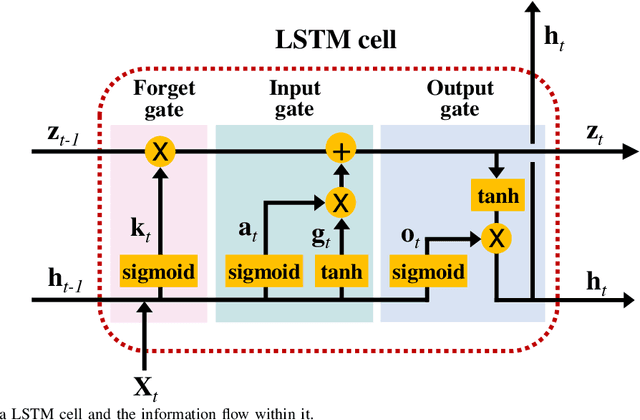
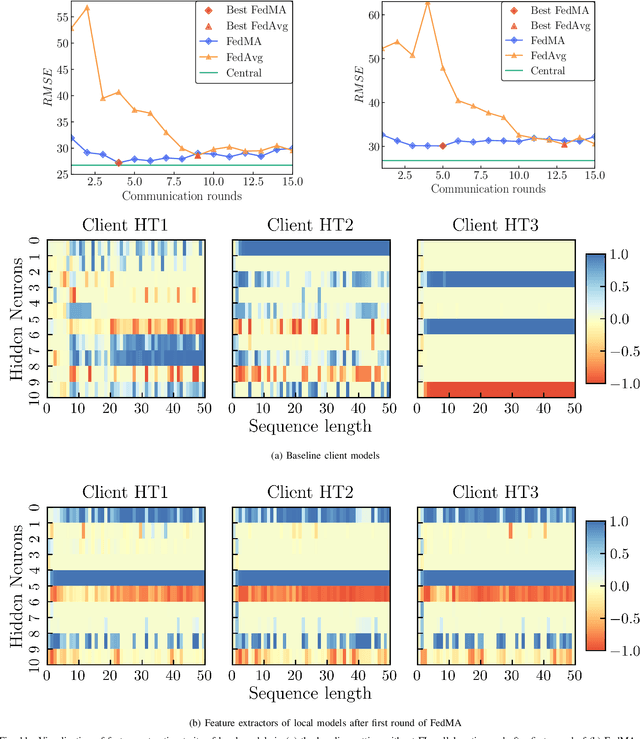
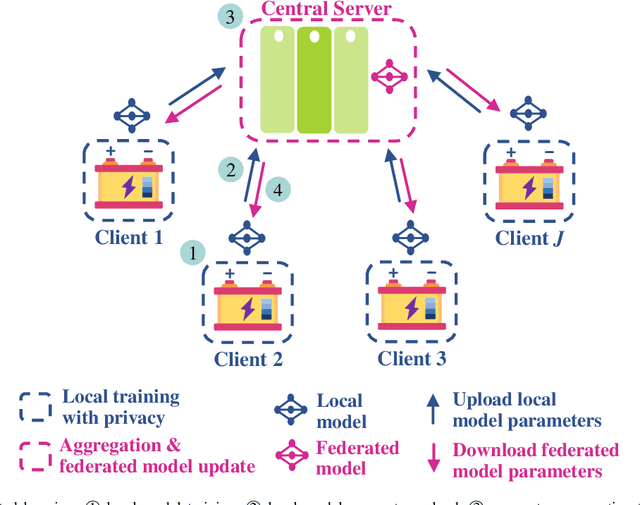
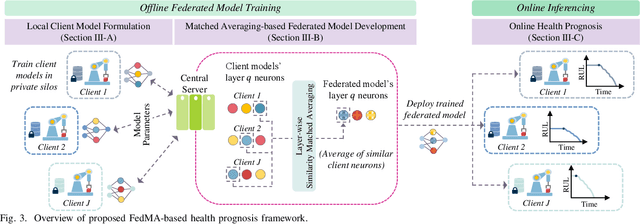
Abstract:Data-driven industrial health prognostics require rich training data to develop accurate and reliable predictive models. However, stringent data privacy laws and the abundance of edge industrial data necessitate decentralized data utilization. Thus, the industrial health prognostics field is well suited to significantly benefit from federated learning (FL), a decentralized and privacy-preserving learning technique. However, FL-based health prognostics tasks have hardly been investigated due to the complexities of meaningfully aggregating model parameters trained from heterogeneous data to form a high performing federated model. Specifically, data heterogeneity among edge devices, stemming from dissimilar degradation mechanisms and unequal dataset sizes, poses a critical statistical challenge for developing accurate federated models. We propose a pioneering FL-based health prognostic model with a feature similarity-matched parameter aggregation algorithm to discriminatingly learn from heterogeneous edge data. The algorithm searches across the heterogeneous locally trained models and matches neurons with probabilistically similar feature extraction functions first, before selectively averaging them to form the federated model parameters. As the algorithm only averages similar neurons, as opposed to conventional naive averaging of coordinate-wise neurons, the distinct feature extractors of local models are carried over with less dilution to the resultant federated model. Using both cyclic degradation data of Li-ion batteries and non-cyclic data of turbofan engines, we demonstrate that the proposed method yields accuracy improvements as high as 44.5\% and 39.3\% for state-of-health estimation and remaining useful life estimation, respectively.
* 17 pages, 11 figures, and 6 tables
Lithium-ion Battery Online Knee Onset Detection by Matrix Profile
Apr 03, 2023Abstract:Lithium-ion batteries (LiBs) degrade slightly until the knee onset, after which the deterioration accelerates to end of life (EOL). The knee onset, which marks the initiation of the accelerated degradation rate, is crucial in providing an early warning of the battery's performance changes. However, there is only limited literature on online knee onset identification. Furthermore, it is good to perform such identification using easily collected measurements. To solve these challenges, an online knee onset identification method is developed by exploiting the temporal information within the discharge data. First, the temporal dynamics embedded in the discharge voltage cycles from the slight degradation stage are extracted by the dynamic time warping. Second, the anomaly is exposed by Matrix Profile during subsequence similarity search. The knee onset is detected when the temporal dynamics of the new cycle exceed the control limit and the profile index indicates a change in regime. Finally, the identified knee onset is utilized to categorize the battery into long-range or short-range categories by its strong correlation with the battery's EOL cycles. With the support of the battery categorization and the training data acquired under the same statistic distribution, the proposed SOH estimation model achieves enhanced estimation results with a root mean squared error as low as 0.22%.
A Slow-Shifting Concerned Machine Learning Method for Short-term Traffic Flow Forecasting
Mar 31, 2023Abstract:The ability to predict traffic flow over time for crowded areas during rush hours is increasingly important as it can help authorities make informed decisions for congestion mitigation or scheduling of infrastructure development in an area. However, a crucial challenge in traffic flow forecasting is the slow shifting in temporal peaks between daily and weekly cycles, resulting in the nonstationarity of the traffic flow signal and leading to difficulty in accurate forecasting. To address this challenge, we propose a slow shifting concerned machine learning method for traffic flow forecasting, which includes two parts. First, we take advantage of Empirical Mode Decomposition as the feature engineering to alleviate the nonstationarity of traffic flow data, yielding a series of stationary components. Second, due to the superiority of Long-Short-Term-Memory networks in capturing temporal features, an advanced traffic flow forecasting model is developed by taking the stationary components as inputs. Finally, we apply this method on a benchmark of real-world data and provide a comparison with other existing methods. Our proposed method outperforms the state-of-art results by 14.55% and 62.56% using the metrics of root mean squared error and mean absolute percentage error, respectively.
Spatiotemporal Capsule Neural Network for Vehicle Trajectory Prediction
Mar 06, 2023



Abstract:Through advancement of the Vehicle-to-Everything (V2X) network, road safety, energy consumption, and traffic efficiency can be significantly improved. An accurate vehicle trajectory prediction benefits communication traffic management and network resource allocation for the real-time application of the V2X network. Recurrent neural networks and their variants have been reported in recent research to predict vehicle mobility. However, the spatial attribute of vehicle movement behavior has been overlooked, resulting in incomplete information utilization. To bridge this gap, we put forward for the first time a hierarchical trajectory prediction structure using the capsule neural network (CapsNet) with three sequential components. First, the geographic information is transformed into a grid map presentation, describing vehicle mobility distribution spatially and temporally. Second, CapsNet serves as the core model to embed local temporal and global spatial correlation through hierarchical capsules. Finally, extensive experiments conducted on actual taxi mobility data collected in Porto city (Portugal) and Singapore show that the proposed method outperforms the state-of-the-art methods.
Digital Twin for Real-time Li-ion Battery State of Health Estimation with Partially Discharged Cycling Data
Dec 09, 2022



Abstract:To meet the fairly high safety and reliability requirements in practice, the state of health (SOH) estimation of Lithium-ion batteries (LIBs), which has a close relationship with the degradation performance, has been extensively studied with the widespread applications of various electronics. The conventional SOH estimation approaches with digital twin are end-of-cycle estimation that require the completion of a full charge/discharge cycle to observe the maximum available capacity. However, under dynamic operating conditions with partially discharged data, it is impossible to sense accurate real-time SOH estimation for LIBs. To bridge this research gap, we put forward a digital twin framework to gain the capability of sensing the battery's SOH on the fly, updating the physical battery model. The proposed digital twin solution consists of three core components to enable real-time SOH estimation without requiring a complete discharge. First, to handle the variable training cycling data, the energy discrepancy-aware cycling synchronization is proposed to align cycling data with guaranteeing the same data structure. Second, to explore the temporal importance of different training sampling times, a time-attention SOH estimation model is developed with data encoding to capture the degradation behavior over cycles, excluding adverse influences of unimportant samples. Finally, for online implementation, a similarity analysis-based data reconstruction has been put forward to provide real-time SOH estimation without requiring a full discharge cycle. Through a series of results conducted on a widely used benchmark, the proposed method yields the real-time SOH estimation with errors less than 1% for most sampling times in ongoing cycles.
A Hybrid Deep Learning Model-based Remaining Useful Life Estimation for Reed Relay with Degradation Pattern Clustering
Sep 14, 2022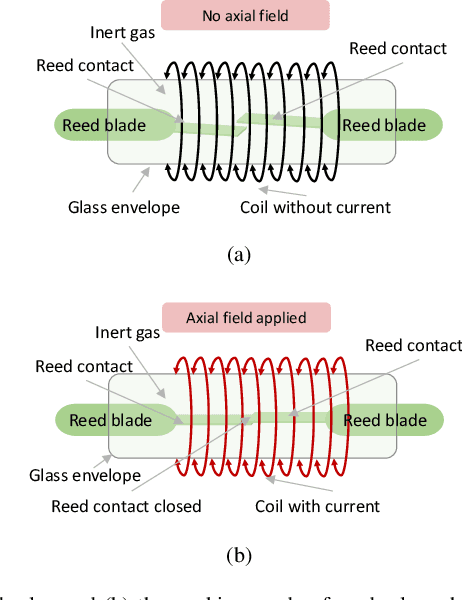

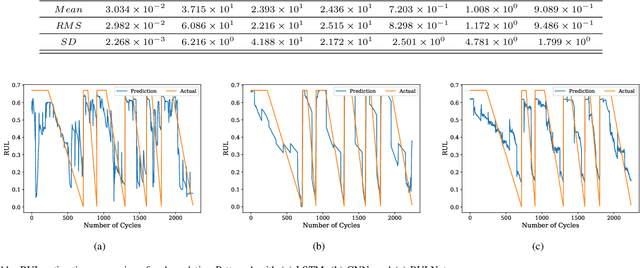
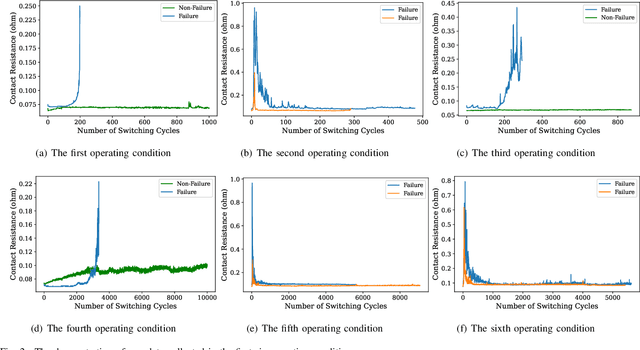
Abstract:Reed relay serves as the fundamental component of functional testing, which closely relates to the successful quality inspection of electronics. To provide accurate remaining useful life (RUL) estimation for reed relay, a hybrid deep learning network with degradation pattern clustering is proposed based on the following three considerations. First, multiple degradation behaviors are observed for reed relay, and hence a dynamic time wrapping-based $K$-means clustering is offered to distinguish degradation patterns from each other. Second, although proper selections of features are of great significance, few studies are available to guide the selection. The proposed method recommends operational rules for easy implementation purposes. Third, a neural network for remaining useful life estimation (RULNet) is proposed to address the weakness of the convolutional neural network (CNN) in capturing temporal information of sequential data, which incorporates temporal correlation ability after high-level feature representation of convolutional operation. In this way, three variants of RULNet are constructed with health indicators, features with self-organizing map, or features with curve fitting. Ultimately, the proposed hybrid model is compared with the typical baseline models, including CNN and long short-term memory network (LSTM), through a practical reed relay dataset with two distinct degradation manners. The results from both degradation cases demonstrate that the proposed method outperforms CNN and LSTM regarding the index root mean squared error.
 Add to Chrome
Add to Chrome Add to Firefox
Add to Firefox Add to Edge
Add to Edge